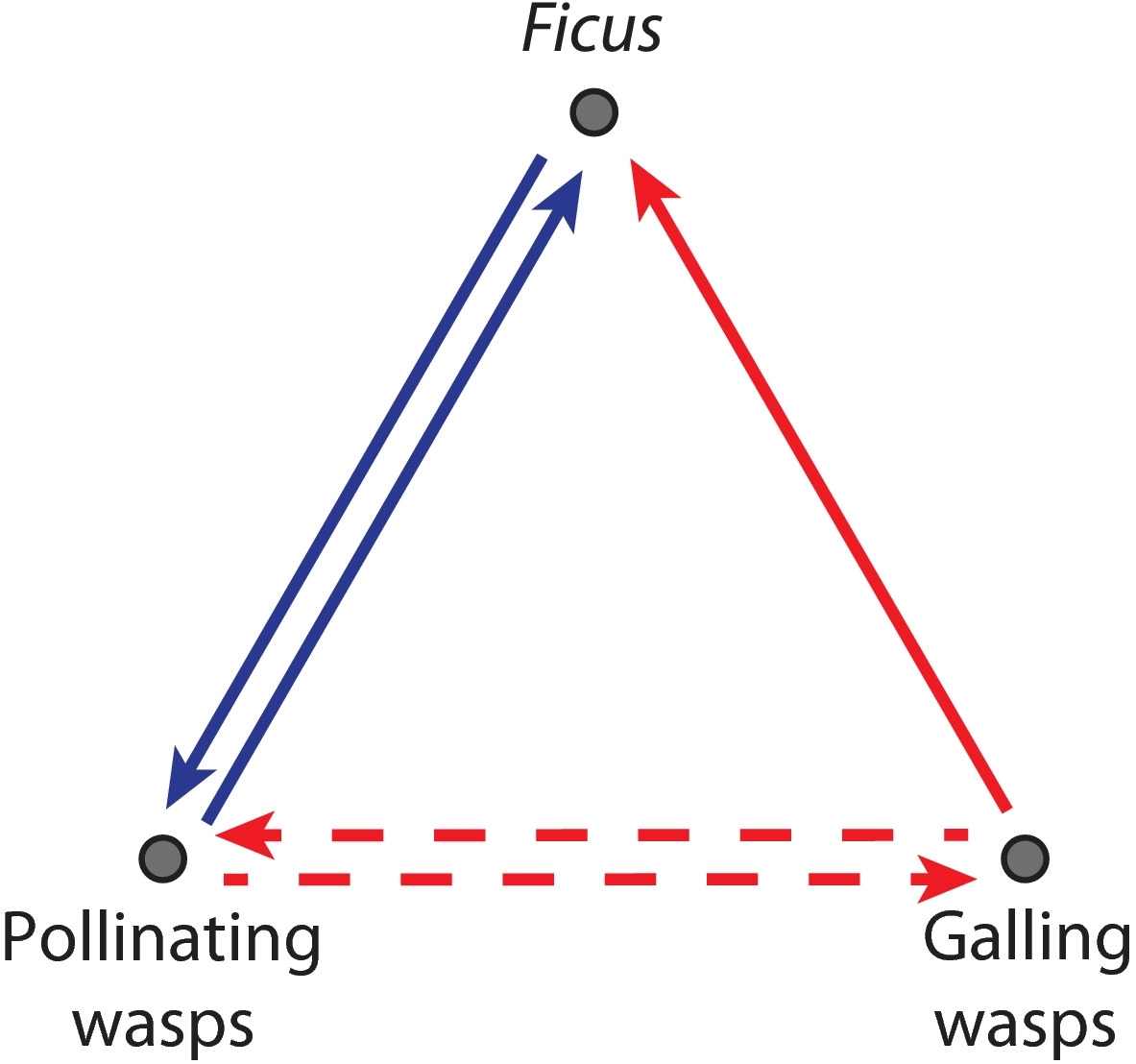Pairs of species can interact in manners that are mutually beneficial (mutualism), mutually detrimental (competition), or beneficial to one partner but detrimental to the other (antagonism: predation, herbivory, parasitism). Interactions between mutualists, competitors, and antagonists have contrasting ecological effects that, sustained over generations, can influence micro-and macroevolution.
In a recent study published in New Phytologist, researchers from Xishuangbanna Tropical Botanical Garden (XTBG) and Beijing Normal University assessed whether the co‐diversification patterns differ among figs and pollinating and galling wasps.
The researchers compared the co‐phylogenies of a local sample of figs and pollinating and galling wasps, involving 26 native fig species (Moraceae: Ficus), 26 species of mutualistic (pollinating), and 33 species of parasitic (galling) wasps (Chalcidoidea) from the tropical rainforest at Xishuangbanna, China.
Using phylogenies for those species based on newly derived gene sequences, they tested whether the overall co‐phylogenetic congruence and relative frequencies of inferred co‐speciation, association duplication, switching, and loss differ for the three pairs of interaction partners.
They also assessed whether fig–pollinator co‐diversification differed between monoecious and dioecious fig species.
They found that the paired phylogenies of pollinators with their mutualists and competitors were significantly congruent, unlike that of figs and their parasites. Just as beneficial interactions between individuals promote coalitions and negative interactions promote dissociation, mutualism tends to facilitate co‐speciation, competition promotes interaction loss, and antagonism encourages association switching.
However, the co‐phylogenetic patterns observed for figs and their associated pollinating and galling wasps do not adhere strictly to these expectations, likely for two reasons. Heterogeneous features of a particular type of interaction, such as competition, with several other species can foster diverse macroevolutionary outcomes. In addition, three‐way interactions between mutualists, competitors, and antagonists may alter the conditions that enable co‐speciation and association switching and loss.
“Our results illustrate the influence of different interspecific interactions on co‐diversification, while also revealing its dependence on specific characteristics of those interactions”, said Dr. PENG Yanqiong, first author of the study.
Contact
PENG Yanqiong Ph.D Principal Investigator
Key Laboratory of Tropical Forest Ecology, Xishuangbanna Tropical Botanical Garden, Chinese Academy of Sciences, Mengla, Yunnan 666303, China
E-mail: pengyq@xtbg.ac.cn

Interaction network between Ficus and pollinating and galling wasps. (Image by PENG Yanqiong)

